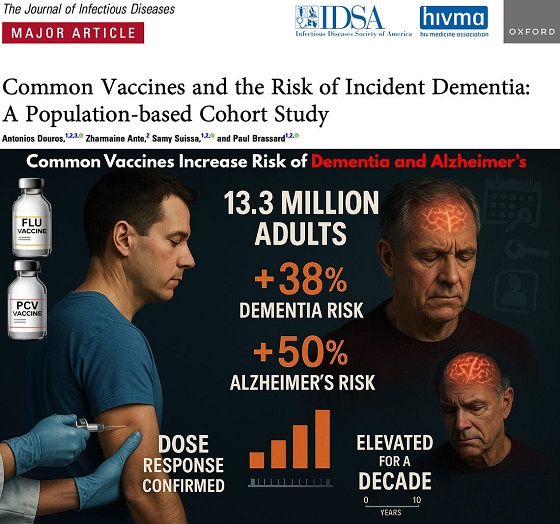Brownstone Institute
The EU Files: What Elon Musk Is Not Telling You About Twitter Censorship

From the Brownstone Institute
BY
The “Twitter Files” have exposed numerous contacts between US government officials and Twitter and requests for suppression of accounts or content: notably, in the context of alleged Covid-19 “disinformation.” But what they have not revealed is that there was in fact a formal government program explicitly dedicated to “Fighting Covid-19 Disinformation” in which Twitter, as well as all other major social media platforms, were enrolled.
As part of this program, the platforms were submitting monthly (later bi-monthly) reports to the government on their censorship efforts. Below is a picture of an archive of the “Fighting Covid-19 Disinformation” reports.

I did not have to hack into the intranet of the US government to find them. All I had to do was look on the public website of the European Commission. For the government in question is not, after all, the US government, but the European Commission.
The reports are available here. Lest there be any doubt that what is at issue in “Fighting Covid-19 Disinformation” is censorship – but how could there be any doubt? – the Commission website specifies that the reports include information on “demoted and removed content containing false and/or misleading information likely to cause physical harm or impair public health policies” (author’s emphasis).
Indeed, the Twitter reports, in particular, include data not only on removed content, but also on outright account suspensions. It is thanks precisely to the data that Twitter was gathering to satisfy the EU’s expectations that we know that 11,230 accounts were suspended under Twitter’s recently discontinued Covid-19 Misleading Information Policy. The below chart, for instance, is taken from Twitter’s last (March-April 2022) report to the EU. Note that the data is “global,” i.e. Twitter was reporting back to the European Commission on its censorship of content and accounts all over the world, not just in the EU.

To be clear then: It is strictly impossible that Twitter has not had contact with EU officials about censoring Covid-19 dissent, because the EU had a program specifically dedicated to the latter and Twitter was part of it. Furthermore, it is strictly impossible that Twitter is not continuing to have contact with EU officials about censoring online content and speech more generally.
This is because the EU’s “Fighting Covid-19 Disinformation” program was launched within the framework of its more general so-called Code of Practice on Disinformation. Under the Code, Twitter and other online platforms and search engines have assumed commitments to combat – i.e. suppress – what the European Commission deems to be “misinformation” or “disinformation.”
In June of last year, a “strengthened” Code of Practice on Disinformation was adopted, which created formalized reporting requirements for Code signatories like Twitter. Other major signatories of the Code include Google/YouTube, Meta/Facebook, Microsoft – which is notably the owner of LinkedIn – and TikTok.
Furthermore, the strengthened Code also created a “permanent task force” on disinformation, in which all code signatories are required to participate and which is chaired by none other than the European Commission itself. The “task force” also includes representatives of the EU’s foreign service. (For more details, see Section IX of the Code, titled “Permanent Task-Force.”)
And if this were not enough, in September of last year, the EU opened a “digital embassy” in San Francisco, in order precisely to be close to Twitter and other leading American tech companies. For the moment, the embassy reportedly shares office space with the Irish consulate: meaning, per Google maps, that it is around a 10-minute drive from Twitter headquarters.

So, it is strictly impossible that Twitter has not had and is not continuing to have contact – indeed extensive and regular contact – with EU officials about censoring content and accounts that the European Commission deems “mis-” or “disinformation.” But we have heard absolutely nothing about this in the “Twitter Files.”
Why? The answer is: because EU censorship really is government censorship, i.e. censorship that Twitter is required to carry out on pain of sanction. This is the difference between the EU censorship and what Elon Musk himself has denounced as “US government censorship.” The latter has amounted to nudges and requests, but was never obligatory and could never be obligatory, thanks to the First Amendment and the fact that there has never been any enforcement mechanism. Any law creating such an enforcement mechanism would be obviously unconstitutional. Hence, Twitter could always simply say no.
But so long as it wants to remain on the EU market, Twitter cannot say no to the demands of the European Commission. As discussed in my previous article here, the enforcement mechanism that renders the Code of Practice obligatory is the EU’s Digital Services Act (DSA). The DSA gives the European Commission power to impose fines of up to 6% percent of global turnover on platforms that it finds to be in violation of the Code: n.b. global turnover, not just turnover on the EU market!
The Commission has not been shy about reminding Twitter and the other tech companies of this threat, thus posting the below tweet last June on the very day that the “strengthened” Code of Practice was announced.

This was before the DSA had even been adopted by the European Parliament! But the DSA has been the sword of Damocles hanging over the heads of Twitter and the other online platforms for the last two years, and it is now law. Once designated a “very large online platform” by the Commission – which is inevitable in its case – Twitter will have 4 months to demonstrate compliance, as the below “DSA Timeline” makes clear.

Moreover, the power to apply financial sanction is not the only extraordinary enforcement power that the DSA gives the Commission. The Commission is also given the power to conduct warrantless inspections of company premises, sealing the premises for the duration of the inspection, and gaining access to whatever “books or records” it pleases. (See Article 69 of the DSA here.) Such inspections, which have been previously used in the context of EU competition law, are quaintly known in the literature as “dawn raids.” (See here, for example.)
This is why Elon Musk and the “Twitter Files” are so verbose about alleged “US government censorship” and so willing to “out” the private communications of US government officials, but have remained suitably mum about EU censorship demands and have not outed the private communications of any EU officials or representatives. Elon Musk is being held hostage by the European Union, and no hostage in his or her right mind is going to do anything to irritate the hostage-takers.
Far from any sign of defiance of the Code and the DSA, what we get from Elon Musk is repeated pledges of fealty: like the below tweet that he posted after meeting with EU Internal Market Commissioner Thierry Breton in January. (For an earlier such pledge in the form of a joint video message with Breton, see here.)

And if Musk should ever have any doubts about what he needs to do to satisfy the EU’s requirements, help is always close at hand – indeed a mere 10 minutes aways. For the EU’s “digital ambassador” to Silicon Valley, Gerard de Graaf, is one of the authors of the DSA.
But if Elon Musk is so fearful about crossing the EU, then why has he restored so many Covid-19 dissident accounts? Wasn’t that an act of defiance of the EU and notably of its “Fighting Covid-19 Disinformation” program?
Well, no, it was not.
Firstly, it should be recalled that Musk had originally promised a “general amnesty” of all suspended accounts. As discussed in my earlier article here, this quickly drew a stern and public rebuke from none other than Thierry Breton, and Musk failed to follow through. Instead, in accordance with Breton’s demands, there has been a case-by-case restoration of selected accounts, which has recently slowed down to a trickle.
@OpenVaet, whose own Twitter account remains suspended, has been maintaining a partial inventory of suspended Twitter accounts. As of this writing, only 99 of the 215 accounts in the sample, or roughly 46% percent, have been restored. (See @OpenVaet’s spreadsheet of still banned and restored accounts here.) Assuming the sample is representative, this would mean that over 6,000 accounts in all are still suspended.
And this is to say nothing of the more insidious form of censorship that is “visibility filtering” or “shadow-banning.” Per the motto “Freedom of speech is not freedom of reach,” Elon Musk has never denied that Twitter would continue to engage in the latter. Many of the returning Covid-19 dissidents have noticed a curious lack of engagement, leading them to wonder if their accounts are not in fact still subjected to unannounced special measures.
But, secondly, and more to the point, have another look at the archive of the “Fighting Covid-19 Disinformation” reports shown above. That is the completearchive. The March-April 2022 reports are the final set of reports. Last June, as noted here, the European Commission discontinued the program, folding the reporting on Covid-19 “disinformation” into the more general reporting requirements established under the “strengthened” Code of Practice on Disinformation.
By this time, most of the most onerous Covid-19 measures in the EU, including “vaccine passports,” had already been ended, and most of the remainder have been gradually rolled back since. Elon Musk thus allowed (some) Covid-19 dissent back onto Twitter when, at least in the EU, there was hardly any public policy to dissent from anymore.
But the EU’s censorship regime as such is still very much in place, and censorship has by no means come to end on Twitter. Thus, on the very night of the Brazilian elections on October 30, Twitter was already censoring local reports of electoral fraud. The famous “misleading” warning labels that had once been used to quarantine reports of Covid-19 vaccine harm now made a reappearance, insisting that according to unnamed “experts,” Brazil’s elections were “safe and secure.” (For examples, see my thread here.)
Whether electoral integrity/fraud in countries of interest, the war in Ukraine or the “next pandemic” for which the EU is already reserving mRNA “vaccine” capacity, you may rest assured that the EU will not lack new subjects of “disinformation” requiring censorship and that Elon Musk and Twitter will oblige.
Whether this censorship takes the form of outright suspensions and content removals or content “demotion” and account “visibility filtering” is a secondary matter. The European Commission will be able to work out such details with Twitter and the other platforms.
Indeed, the DSA further requires the platforms to grant the Commission access to their back offices, including, as Thierry Breton triumphantly notes in a blog post here, “the ‘black box’ of algorithms that are at the heart of platforms’ systems.” As noted on the Commission website, the Commission is even setting up a European Centre for Algorithmic Transparency, in order to be able to better fulfill its “supervisory” role in this regard.
Needless to say, such “transparency” does not extend to mere users such as you or me. For us, the algorithmic functioning of the platforms will remain a “black box.” But the Commission will be able to know everything about it and to demand modifications to ensure compliance with the EU’s requirements.
Brownstone Institute
The Unmasking of Vaccine Science

From the Brownstone Institute
By
I recently purchased Aaron Siri’s new book Vaccines, Amen. As I flipped though the pages, I noticed a section devoted to his now-famous deposition of Dr Stanley Plotkin, the “godfather” of vaccines.
I’d seen viral clips circulating on social media, but I had never taken the time to read the full transcript — until now.
Siri’s interrogation was methodical and unflinching…a masterclass in extracting uncomfortable truths.
A Legal Showdown
In January 2018, Dr Stanley Plotkin, a towering figure in immunology and co-developer of the rubella vaccine, was deposed under oath in Pennsylvania by attorney Aaron Siri.
The case stemmed from a custody dispute in Michigan, where divorced parents disagreed over whether their daughter should be vaccinated. Plotkin had agreed to testify in support of vaccination on behalf of the father.
What followed over the next nine hours, captured in a 400-page transcript, was extraordinary.
Plotkin’s testimony revealed ethical blind spots, scientific hubris, and a troubling indifference to vaccine safety data.
He mocked religious objectors, defended experiments on mentally disabled children, and dismissed glaring weaknesses in vaccine surveillance systems.
A System Built on Conflicts
From the outset, Plotkin admitted to a web of industry entanglements.
He confirmed receiving payments from Merck, Sanofi, GSK, Pfizer, and several biotech firms. These were not occasional consultancies but long-standing financial relationships with the very manufacturers of the vaccines he promoted.
Plotkin appeared taken aback when Siri questioned his financial windfall from royalties on products like RotaTeq, and expressed surprise at the “tone” of the deposition.
Siri pressed on: “You didn’t anticipate that your financial dealings with those companies would be relevant?”
Plotkin replied: “I guess, no, I did not perceive that that was relevant to my opinion as to whether a child should receive vaccines.”
The man entrusted with shaping national vaccine policy had a direct financial stake in its expansion, yet he brushed it aside as irrelevant.
Contempt for Religious Dissent
Siri questioned Plotkin on his past statements, including one in which he described vaccine critics as “religious zealots who believe that the will of God includes death and disease.”
Siri asked whether he stood by that statement. Plotkin replied emphatically, “I absolutely do.”
Plotkin was not interested in ethical pluralism or accommodating divergent moral frameworks. For him, public health was a war, and religious objectors were the enemy.
He also admitted to using human foetal cells in vaccine production — specifically WI-38, a cell line derived from an aborted foetus at three months’ gestation.
Siri asked if Plotkin had authored papers involving dozens of abortions for tissue collection. Plotkin shrugged: “I don’t remember the exact number…but quite a few.”
Plotkin regarded this as a scientific necessity, though for many people — including Catholics and Orthodox Jews — it remains a profound moral concern.
Rather than acknowledging such sensitivities, Plotkin dismissed them outright, rejecting the idea that faith-based values should influence public health policy.
That kind of absolutism, where scientific aims override moral boundaries, has since drawn criticism from ethicists and public health leaders alike.
As NIH director Jay Bhattacharya later observed during his 2025 Senate confirmation hearing, such absolutism erodes trust.
“In public health, we need to make sure the products of science are ethically acceptable to everybody,” he said. “Having alternatives that are not ethically conflicted with foetal cell lines is not just an ethical issue — it’s a public health issue.”
Safety Assumed, Not Proven
When the discussion turned to safety, Siri asked, “Are you aware of any study that compares vaccinated children to completely unvaccinated children?”
Plotkin replied that he was “not aware of well-controlled studies.”
Asked why no placebo-controlled trials had been conducted on routine childhood vaccines such as hepatitis B, Plotkin said such trials would be “ethically difficult.”
That rationale, Siri noted, creates a scientific blind spot. If trials are deemed too unethical to conduct, then gold-standard safety data — the kind required for other pharmaceuticals — simply do not exist for the full childhood vaccine schedule.
Siri pointed to one example: Merck’s hepatitis B vaccine, administered to newborns. The company had only monitored participants for adverse events for five days after injection.
Plotkin didn’t dispute it. “Five days is certainly short for follow-up,” he admitted, but claimed that “most serious events” would occur within that time frame.
Siri challenged the idea that such a narrow window could capture meaningful safety data — especially when autoimmune or neurodevelopmental effects could take weeks or months to emerge.
Siri pushed on. He asked Plotkin if the DTaP and Tdap vaccines — for diphtheria, tetanus and pertussis — could cause autism.
“I feel confident they do not,” Plotkin replied.
But when shown the Institute of Medicine’s 2011 report, which found the evidence “inadequate to accept or reject” a causal link between DTaP and autism, Plotkin countered, “Yes, but the point is that there were no studies showing that it does cause autism.”
In that moment, Plotkin embraced a fallacy: treating the absence of evidence as evidence of absence.
“You’re making assumptions, Dr Plotkin,” Siri challenged. “It would be a bit premature to make the unequivocal, sweeping statement that vaccines do not cause autism, correct?”
Plotkin relented. “As a scientist, I would say that I do not have evidence one way or the other.”
The MMR
The deposition also exposed the fragile foundations of the measles, mumps, and rubella (MMR) vaccine.
When Siri asked for evidence of randomised, placebo-controlled trials conducted before MMR’s licensing, Plotkin pushed back: “To say that it hasn’t been tested is absolute nonsense,” he said, claiming it had been studied “extensively.”
Pressed to cite a specific trial, Plotkin couldn’t name one. Instead, he gestured to his own 1,800-page textbook: “You can find them in this book, if you wish.”
Siri replied that he wanted an actual peer-reviewed study, not a reference to Plotkin’s own book. “So you’re not willing to provide them?” he asked. “You want us to just take your word for it?”
Plotkin became visibly frustrated.
Eventually, he conceded there wasn’t a single randomised, placebo-controlled trial. “I don’t remember there being a control group for the studies, I’m recalling,” he said.
The exchange foreshadowed a broader shift in public discourse, highlighting long-standing concerns that some combination vaccines were effectively grandfathered into the schedule without adequate safety testing.
In September this year, President Trump called for the MMR vaccine to be broken up into three separate injections.
The proposal echoed a view that Andrew Wakefield had voiced decades earlier — namely, that combining all three viruses into a single shot might pose greater risk than spacing them out.
Wakefield was vilified and struck from the medical register. But now, that same question — once branded as dangerous misinformation — is set to be re-examined by the CDC’s new vaccine advisory committee, chaired by Martin Kulldorff.
The Aluminium Adjuvant Blind Spot
Siri next turned to aluminium adjuvants — the immune-activating agents used in many childhood vaccines.
When asked whether studies had compared animals injected with aluminium to those given saline, Plotkin conceded that research on their safety was limited.
Siri pressed further, asking if aluminium injected into the body could travel to the brain. Plotkin replied, “I have not seen such studies, no, or not read such studies.”
When presented with a series of papers showing that aluminium can migrate to the brain, Plotkin admitted he had not studied the issue himself, acknowledging that there were experiments “suggesting that that is possible.”
Asked whether aluminium might disrupt neurological development in children, Plotkin stated, “I’m not aware that there is evidence that aluminum disrupts the developmental processes in susceptible children.”
Taken together, these exchanges revealed a striking gap in the evidence base.
Compounds such as aluminium hydroxide and aluminium phosphate have been injected into babies for decades, yet no rigorous studies have ever evaluated their neurotoxicity against an inert placebo.
This issue returned to the spotlight in September 2025, when President Trump pledged to remove aluminium from vaccines, and world-leading researcher Dr Christopher Exley renewed calls for its complete reassessment.
A Broken Safety Net
Siri then turned to the reliability of the Vaccine Adverse Event Reporting System (VAERS) — the primary mechanism for collecting reports of vaccine-related injuries in the United States.
Did Plotkin believe most adverse events were captured in this database?
“I think…probably most are reported,” he replied.
But Siri showed him a government-commissioned study by Harvard Pilgrim, which found that fewer than 1% of vaccine adverse events are reported to VAERS.
“Yes,” Plotkin said, backtracking. “I don’t really put much faith into the VAERS system…”
Yet this is the same database officials routinely cite to claim that “vaccines are safe.”
Ironically, Plotkin himself recently co-authored a provocative editorial in the New England Journal of Medicine, conceding that vaccine safety monitoring remains grossly “inadequate.”
Experimenting on the Vulnerable
Perhaps the most chilling part of the deposition concerned Plotkin’s history of human experimentation.
“Have you ever used orphans to study an experimental vaccine?” Siri asked.
“Yes,” Plotkin replied.
“Have you ever used the mentally handicapped to study an experimental vaccine?” Siri asked.
“I don’t recollect…I wouldn’t deny that I may have done so,” Plotkin replied.
Siri cited a study conducted by Plotkin in which he had administered experimental rubella vaccines to institutionalised children who were “mentally retarded.”
Plotkin stated flippantly, “Okay well, in that case…that’s what I did.”
There was no apology, no sign of ethical reflection — just matter-of-fact acceptance.
Siri wasn’t done.
He asked if Plotkin had argued that it was better to test on those “who are human in form but not in social potential” rather than on healthy children.
Plotkin admitted to writing it.
Siri established that Plotkin had also conducted vaccine research on the babies of imprisoned mothers, and on colonised African populations.
Plotkin appeared to suggest that the scientific value of such studies outweighed the ethical lapses—an attitude that many would interpret as the classic ‘ends justify the means’ rationale.
But that logic fails the most basic test of informed consent. Siri asked whether consent had been obtained in these cases.
“I don’t remember…but I assume it was,” Plotkin said.
Assume?
This was post-Nuremberg research. And the leading vaccine developer in America couldn’t say for sure whether he had properly informed the people he experimented on.
In any other field of medicine, such lapses would be disqualifying.
A Casual Dismissal of Parental Rights
Plotkin’s indifference to experimenting on disabled children didn’t stop there.
Siri asked whether someone who declined a vaccine due to concerns about missing safety data should be labelled “anti-vax.”
Plotkin replied, “If they refused to be vaccinated themselves or refused to have their children vaccinated, I would call them an anti-vaccination person, yes.”
Plotkin was less concerned about adults making that choice for themselves, but he had no tolerance for parents making those choices for their own children.
“The situation for children is quite different,” said Plotkin, “because one is making a decision for somebody else and also making a decision that has important implications for public health.”
In Plotkin’s view, the state held greater authority than parents over a child’s medical decisions — even when the science was uncertain.
The Enabling of Figures Like Plotkin
The Plotkin deposition stands as a case study in how conflicts of interest, ideology, and deference to authority have corroded the scientific foundations of public health.
Plotkin is no fringe figure. He is celebrated, honoured, and revered. Yet he promotes vaccines that have never undergone true placebo-controlled testing, shrugs off the failures of post-market surveillance, and admits to experimenting on vulnerable populations.
This is not conjecture or conspiracy — it is sworn testimony from the man who helped build the modern vaccine program.
Now, as Health Secretary Robert F. Kennedy, Jr. reopens long-dismissed questions about aluminium adjuvants and the absence of long-term safety studies, Plotkin’s once-untouchable legacy is beginning to fray.
Republished from the author’s Substack
Brownstone Institute
Bizarre Decisions about Nicotine Pouches Lead to the Wrong Products on Shelves

From the Brownstone Institute
A walk through a dozen convenience stores in Montgomery County, Pennsylvania, says a lot about how US nicotine policy actually works. Only about one in eight nicotine-pouch products for sale is legal. The rest are unauthorized—but they’re not all the same. Some are brightly branded, with uncertain ingredients, not approved by any Western regulator, and clearly aimed at impulse buyers. Others—like Sweden’s NOAT—are the opposite: muted, well-made, adult-oriented, and already approved for sale in Europe.
Yet in the United States, NOAT has been told to stop selling. In September 2025, the Food and Drug Administration (FDA) issued the company a warning letter for offering nicotine pouches without marketing authorization. That might make sense if the products were dangerous, but they appear to be among the safest on the market: mild flavors, low nicotine levels, and recyclable paper packaging. In Europe, regulators consider them acceptable. In America, they’re banned. The decision looks, at best, strange—and possibly arbitrary.
What the Market Shows
My October 2025 audit was straightforward. I visited twelve stores and recorded every distinct pouch product visible for sale at the counter. If the item matched one of the twenty ZYN products that the FDA authorized in January, it was counted as legal. Everything else was counted as illegal.
Two of the stores told me they had recently received FDA letters and had already removed most illegal stock. The other ten stores were still dominated by unauthorized products—more than 93 percent of what was on display. Across all twelve locations, about 12 percent of products were legal ZYN, and about 88 percent were not.
The illegal share wasn’t uniform. Many of the unauthorized products were clearly high-nicotine imports with flashy names like Loop, Velo, and Zimo. These products may be fine, but some are probably high in contaminants, and a few often with very high nicotine levels. Others were subdued, plainly meant for adult users. NOAT was a good example of that second group: simple packaging, oat-based filler, restrained flavoring, and branding that makes no effort to look “cool.” It’s the kind of product any regulator serious about harm reduction would welcome.
Enforcement Works
To the FDA’s credit, enforcement does make a difference. The two stores that received official letters quickly pulled their illegal stock. That mirrors the agency’s broader efforts this year: new import alerts to detain unauthorized tobacco products at the border (see also Import Alert 98-06), and hundreds of warning letters to retailers, importers, and distributors.
But effective enforcement can’t solve a supply problem. The list of legal nicotine-pouch products is still extremely short—only a narrow range of ZYN items. Adults who want more variety, or stores that want to meet that demand, inevitably turn to gray-market suppliers. The more limited the legal catalog, the more the illegal market thrives.
Why the NOAT Decision Appears Bizarre
The FDA’s own actions make the situation hard to explain. In January 2025, it authorized twenty ZYN products after finding that they contained far fewer harmful chemicals than cigarettes and could help adult smokers switch. That was progress. But nine months later, the FDA has approved nothing else—while sending a warning letter to NOAT, arguably the least youth-oriented pouch line in the world.
The outcome is bad for legal sellers and public health. ZYN is legal; a handful of clearly risky, high-nicotine imports continue to circulate; and a mild, adult-market brand that meets European safety and labeling rules is banned. Officially, NOAT’s problem is procedural—it lacks a marketing order. But in practical terms, the FDA is punishing the very design choices it claims to value: simplicity, low appeal to minors, and clean ingredients.
This approach also ignores the differences in actual risk. Studies consistently show that nicotine pouches have far fewer toxins than cigarettes and far less variability than many vapes. The biggest pouch concerns are uneven nicotine levels and occasional traces of tobacco-specific nitrosamines, depending on manufacturing quality. The serious contamination issues—heavy metals and inconsistent dosage—belong mostly to disposable vapes, particularly the flood of unregulated imports from China. Treating all “unauthorized” products as equally bad blurs those distinctions and undermines proportional enforcement.
A Better Balance: Enforce Upstream, Widen the Legal Path
My small Montgomery County survey suggests a simple formula for improvement.
First, keep enforcement targeted and focused on suppliers, not just clerks. Warning letters clearly change behavior at the store level, but the biggest impact will come from auditing distributors and importers, and stopping bad shipments before they reach retail shelves.
Second, make compliance easy. A single-page list of authorized nicotine-pouch products—currently the twenty approved ZYN items—should be posted in every store and attached to distributor invoices. Point-of-sale systems can block barcodes for anything not on the list, and retailers could affirm, once a year, that they stock only approved items.
Third, widen the legal lane. The FDA launched a pilot program in September 2025 to speed review of new pouch applications. That program should spell out exactly what evidence is needed—chemical data, toxicology, nicotine release rates, and behavioral studies—and make timely decisions. If products like NOAT meet those standards, they should be authorized quickly. Legal competition among adult-oriented brands will crowd out the sketchy imports far faster than enforcement alone.
The Bottom Line
Enforcement matters, and the data show it works—where it happens. But the legal market is too narrow to protect consumers or encourage innovation. The current regime leaves a few ZYN products as lonely legal islands in a sea of gray-market pouches that range from sensible to reckless.
The FDA’s treatment of NOAT stands out as a case study in inconsistency: a quiet, adult-focused brand approved in Europe yet effectively banned in the US, while flashier and riskier options continue to slip through. That’s not a public-health victory; it’s a missed opportunity.
If the goal is to help adult smokers move to lower-risk products while keeping youth use low, the path forward is clear: enforce smartly, make compliance easy, and give good products a fair shot. Right now, we’re doing the first part well—but failing at the second and third. It’s time to fix that.
-

 Bruce Dowbiggin1 day ago
Bruce Dowbiggin1 day agoWayne Gretzky’s Terrible, Awful Week.. And Soccer/ Football.
-

 espionage24 hours ago
espionage24 hours agoWestern Campuses Help Build China’s Digital Dragnet With U.S. Tax Funds, Study Warns
-

 Focal Points15 hours ago
Focal Points15 hours agoCommon Vaccines Linked to 38-50% Increased Risk of Dementia and Alzheimer’s
-

 Opinion1 day ago
Opinion1 day agoThe day the ‘King of rock ‘n’ roll saved the Arizona memorial
-

 Agriculture1 day ago
Agriculture1 day agoCanada’s air quality among the best in the world
-

 Automotive5 hours ago
Automotive5 hours agoThe $50 Billion Question: EVs Never Delivered What Ottawa Promised
-

 Business22 hours ago
Business22 hours agoCanada invests $34 million in Chinese drones now considered to be ‘high security risks’
-

 Health13 hours ago
Health13 hours agoThe Data That Doesn’t Exist







